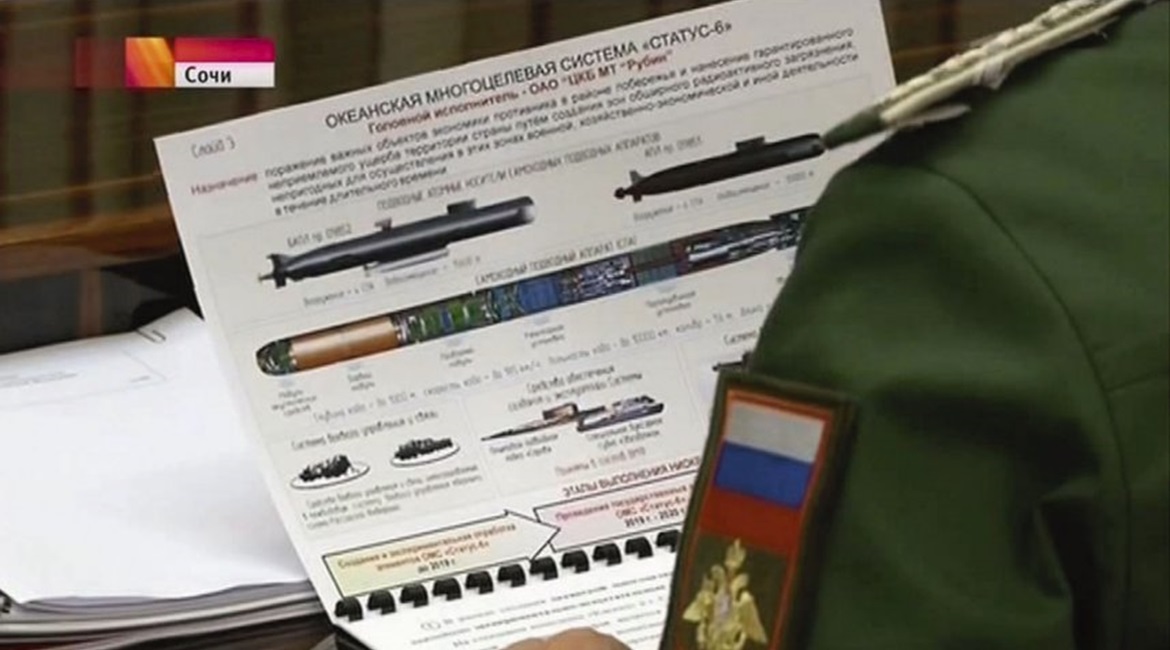
Russian President Vladimir Putin announced at the beginning of February the successful completion of underwater tests of its ‘Poseidon’ unmanned underwater vehicle (UUV). Factory trials are expected to begin in the summer of 2019.

A screenshot of the ‘Poseidon’ system, taken from Russian media footage shown back in 2015. (Russian state media)
First revealed in late 2015, the since named ‘Poseidon’, referred to previously as ‘Status-6’ or ‘Kanyon’, has been conceived as a fast, deep-diving, large-diameter nuclear-powered torpedo able to deliver a 2 MT nuclear strike at intercontinental range.
The 24 m long UUV armed with a nuclear warhead is designed to navigate autonomously with a maximum speed of 107 kt and detonate near an enemy coastal city, generating a tsunami wave, Russian state media reported.
“On its way to a target, ‘Poseidon’ will be able to avoid and overcome any anti-submarine barriers and other enemy defence systems due to the fully automated operating system. All together, the intellectual and performance characteristics of the vehicle will make it invulnerable and secure a guaranteed target destruction,” an unnamed defence industry source told Russian state media.
Putin officially unveiled the ‘Poseidon’ project in his state-of-the-nation address to both houses of Russia’s parliament in March 2018, saying that the UUV had rendered NATO’s missile defences “useless”.
Details of the UUV were first revealed in a state television report in November 2015, prompting analysts to debate whether details had been revealed deliberately.
The UUV is part of Russia’s state armament programme for 2018–27, and it is expected to enter service before 2027, Russian state media said.
Looking to read the full article?
Gain unlimited access to Janes news and more...




